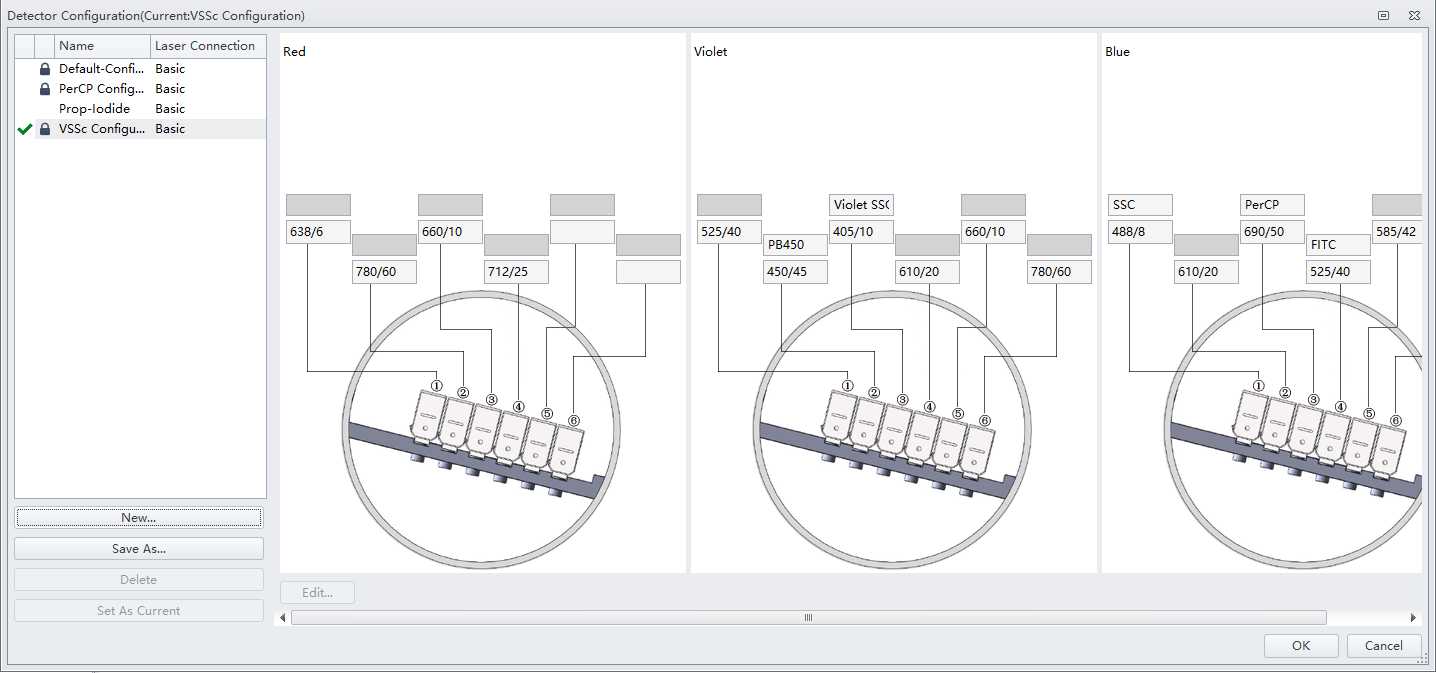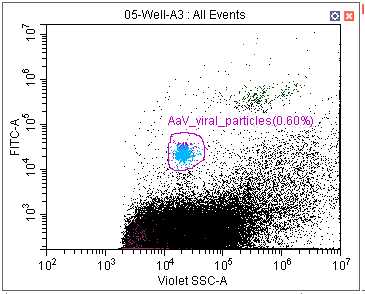Aureococcus anophagefferens Virus (AaV)/Floreovirus quantuckensis viral particle count by SYBR Green staining and flow cytometry (CytoFLEX S Flow Cytometer Beckman Coulter)
Alex Truchon, Steven W Wilhelm, Emily E. Chase, Samantha R Coy
cytoflex
flow cytometry
violet side scatter
Aureococcus anophagefferens
AaV
Floreovirus quantuckensis
viral particles
counting virus
Abstract
A method for obtaining viral particle counts of Aureococcus anophagefferens virus (AaV)/ Floreovirus quantuckensis on a Beckman Coulter CytoFLEX S Flow Cytometry System (CytExpert software) using SYBR gold staining. Adapted from a protocol originally produced by Dr. Samantha Coy for PBCV-1, which was derived from Brussaard 2004; and *Brussaard et al. 2010.
Brussaard CP. Optimization of procedures for counting viruses by flow cytometry. Appl Environ Microbiol. 2004 Mar;70(3):1506-13. doi: 10.1128/AEM.70.3.1506-1513.2004. PMID: 15006772; PMCID: PMC368280.
Brussaard, C. P. D., J. P. Payet, C. Winter, and M. G. Weinbauer. 2010. Chapter 11: Quantification of aquatic viruses by flow cytometry. Manual of Aquatic Viral Ecology. Waco, TX:American Society of Limnology and Oceanography. doi:10.4319/mave.2010.978-0-9845591-0-7
*includes a published protocols.io: dx.doi.org/10.17504/protocols.io.dpj5km
Before start
Boot up the CytExpert Software and follow the start up protocol. Familiarity with the machine and its setting will permit necessary adjustments for your experiments and help ensure accurate results and interpretation.
Steps
CytoFLEX Experiment Setup
Create a new experiment with sample acquisition settings as follows:
- FSC 500
- SSC 200
- VioSSC 200
- FITC 2000
- PerCP 500
- PB450 40 [placeholder; this could be set for a different dye than Pacific Blue shown here, this will not change the results]
- Threshold: (manual) Violet SSC 3000
Set the flow rate to slow (10 μL/minute), the sampling to 60 seconds (not by events), and the display to 100 000 events. Under Advanced -> Event Rate Setting select "high" (this is not necessary if events per second are below 10,000).
Flow rate may need to be adjusted for a high abort percentage (>10%), both adjusting the rate (custom or otherwise) and diluting dense (e.g., a higher dilution series) samples will solve this problem. Users should also aim for a certain number of events per second, typically between 300–2000.
Settings can be adjusted in real time by selecting "run" on samples and changing the acquisition settings. The full CytoFLEX configuration of which this protocol is based off of is pictured below (Figure 1) for full repeatability. Figure 1 ) for full repeatability.

Customised measurement setups can be produced with histograms, density plots, etc. However, based on the above acquisition settings and a plotting of FITC-A and VioletSSC (both at log distribution) will accomplish detection of Floreovirus quantuckensis. See Figure 2 for this population. These results are achieved with the sampling and staining procedure detailed below.

Sample Fixing and Staining (adapted from sources as described)
To fix samples: prepare 2.0 mL cryovials (this permits the option of long term storage by flash freezing in liquid nitrogen) for a 1.0 mL sample with a final concentration of 1% glutaraldehyde (EM Grade). Samples can include filtered lysate, or unfiltered lysate – which may include host cells ( Aureococcus anophagefferens ) and bacteria. Samples should incubate for 45+ minutes at 4 °C in the dark.
To facilitate easy sampling these can be done ahead of time. For a 1.0 mL sample 40 μL of a working stock of 25% glutaraldehyde can be added to each tube, followed by 960 μL of the sample to be fixed at sampling.
Dilute SYBR Gold [Invitrogen REF S11494; 10 000×] to 100×. It is recommend to maintain the working stock in the dark and on ice (reduces dye fading).
Aliquots can be stored at 4 °C for one month.
A serial dilution of the viral particle containing samples (sans stain) should be performed using 100 μL of fixed sample transferred over to 900 μL ASP12A media (or otherwise the same media used for your own cultures). At each step mix by pipetting up and down.
Depending on a priori knowledge you may want fully process (i.e. stain and observe) dilutions at 10-1, 10-2, 10-3, and/or 10-4. Likely, a subset only of these will be explored, however observing multiple dilutions should provide more confidence in viral particle counts. -1, 10-2, 10-3, and/or 10-4. Likely, a subset only of these will be explored, however observing multiple dilutions should provide more confidence in viral particle counts.
Serially diluted samples can now be stained by the addition of the working stain solution to a 0.5× concentration. Samples should be incubated at 80 °C for ten minutes in the dark.
For a 1.0 mL sample 5 μL of 100× SYBR Gold can be added to reach this concentration.
Serially diluted samples can be cooled for 5 minutes in the dark at ambient temperature (~19–21 °C). Upon completion of this incubation samples can be processed using the CytoFLEX.
CytoFLEX Sampling Process
250 μL of each fixed and stained viral particle containing sample to be measured are pipetted into a 96 well CoStar [REF#3795] Assay Plate round bottom plate (can be substituted) and loaded into the CytoFLEX.
Please see the CytoFLEX Manual for detailed instructions of each step and machine use. Sample volumes can be lowered if necessary after taking flow rates into account. Given that glutaraldehyde has been used in the fixing and staining process, gloves need to be wore when handling the plate (e.g., when loading the plate into the CytoFLEX).
Labelled samples can then be run sequentially using the "Auto Record". Upon completion data can be either exported (most conveniently as a .csv) or reviewed using the "Statistics" window according to all events and events within user defined gated populations. Population counts are achieved by number of events within the viral particle containing gates (as suggested in Step 2 ). Back calculating your serial dilution series will permit the estimation of viral particles contained in your sample at the point of fixing.
Note that these are viral particle counts and not a determination of infectious viral particles.

